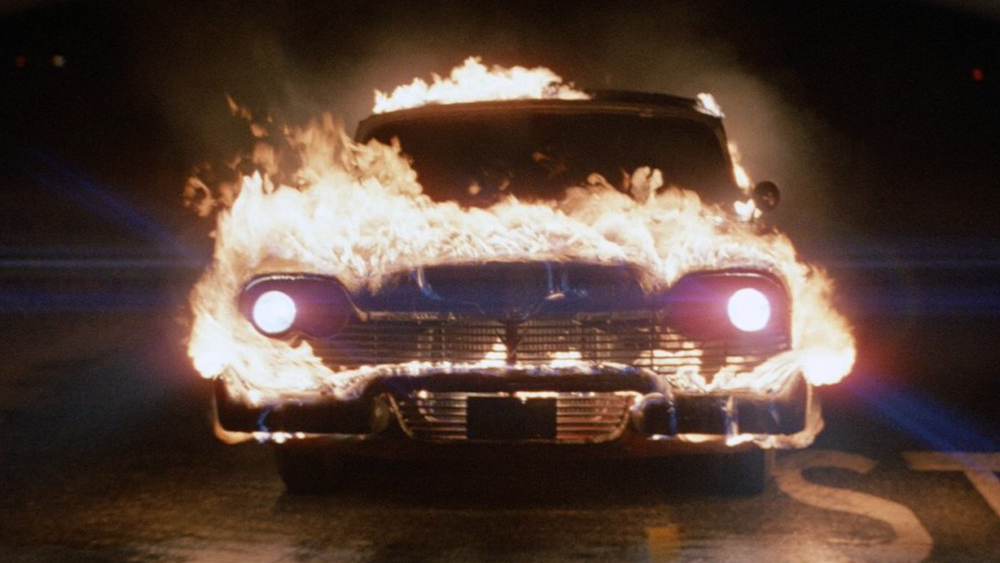In the introduction to the published shooting script for Lawrence Kasdan’s adaptation of Dreamcatcher (2003), Stephen King regards Christine as a film that should have been good, but isn’t. King considers it “sort of boring” and goes on to state that he’d rather have it be “bad than boring.” By the time John Carpenter’s Christine hit American movie theaters in 1983, King had already been adapted by Brian De Palma (Carrie, 1976), Stanley Kubrick (The Shining, 1980), David Cronenberg (The Dead Zone, 1983), and Lewis Teague (Cujo, also 1983). Rapidly becoming a brand unto himself—King’s name received prominent placement on all three of the one-sheets for the 1983 films—the adaptations were as much about the source novels as the directors tasked with bringing them to screen. And, as in the case of Carpenter, these filmmakers often found themselves adapting a novel more popular than their own most recent work.
Universal bet big on John Carpenter’s The Thing (1982), a gruesome sci-fi spectacle that was usurped by more family friendly genre films like E.T. and Star Trek II: The Wrath of Khan that same summer. Critics trashed it. Siskel & Ebert gave it two thumbs down, citing its “repellant special effects.” Audiences turned their backs on it. Meanwhile, Richard Kobritz, who produced Tobe Hooper’s sprawling TV-adaptation of King’s Salem’s Lot in 1979, optioned the film rights to Christine and immediately offered it to Carpenter, who he had previously worked with on the TV-movie Someone’s Watching Me (1978).
Christine isn’t about a person but a car: a red 1958 Plymouth Fury with shining chrome accents that has been, as the poster’s tagline puts it, “possessed by Hell.” Carpenter, despite making a name for himself in the horror genre, had really only directed three bona fide horror films prior to Christine: Halloween, Someone’s Watching Me, and The Fog (1980). A case can be made for the gory excesses of The Thing, but the rest of his filmography up until that point—Dark Star (1974), Assault on Precinct 13 (1976), Elvis (1979), and Escape from New York (1981)—found the filmmaker constantly chasing new ideas, eschewing the confines of genre, and amassing a body of work that was as esoteric as it was consistently engaging. Christine, a supernatural coming-of-age tale about obsession, melded Carpenter’s fascination with American suburbia, unbridled machismo, machinery, and ghosts. It represents a perfect marriage of source and craftsman.
While King considers Carpenter’s adaptation “sort of boring,” it is anything but. The scenes of Keith Gordon—playing a similarly nebish young man to the one in his lead turn for De Palma’s Dressed to Kill (1980)—bringing the titular Chrstine back to life after being attacked by a malicious gang of rabble-rousers find Carpenter in a histrionic fury that he did not return to until In the Mouth of Madness (1994). Christine, in which a possessed car mows down hoodie-clad teens to the tune of a doo-wop soundtrack, is ultimately a love (and divorce) story of man and machine—a poison pen inked treatise on the relationship between Americans, their automobiles, and the sprawl of the suburb.
Christine screens tonight, October 22, at Nitehawk Prospect Park on 35mm as part of the series “Urban Legends.”



